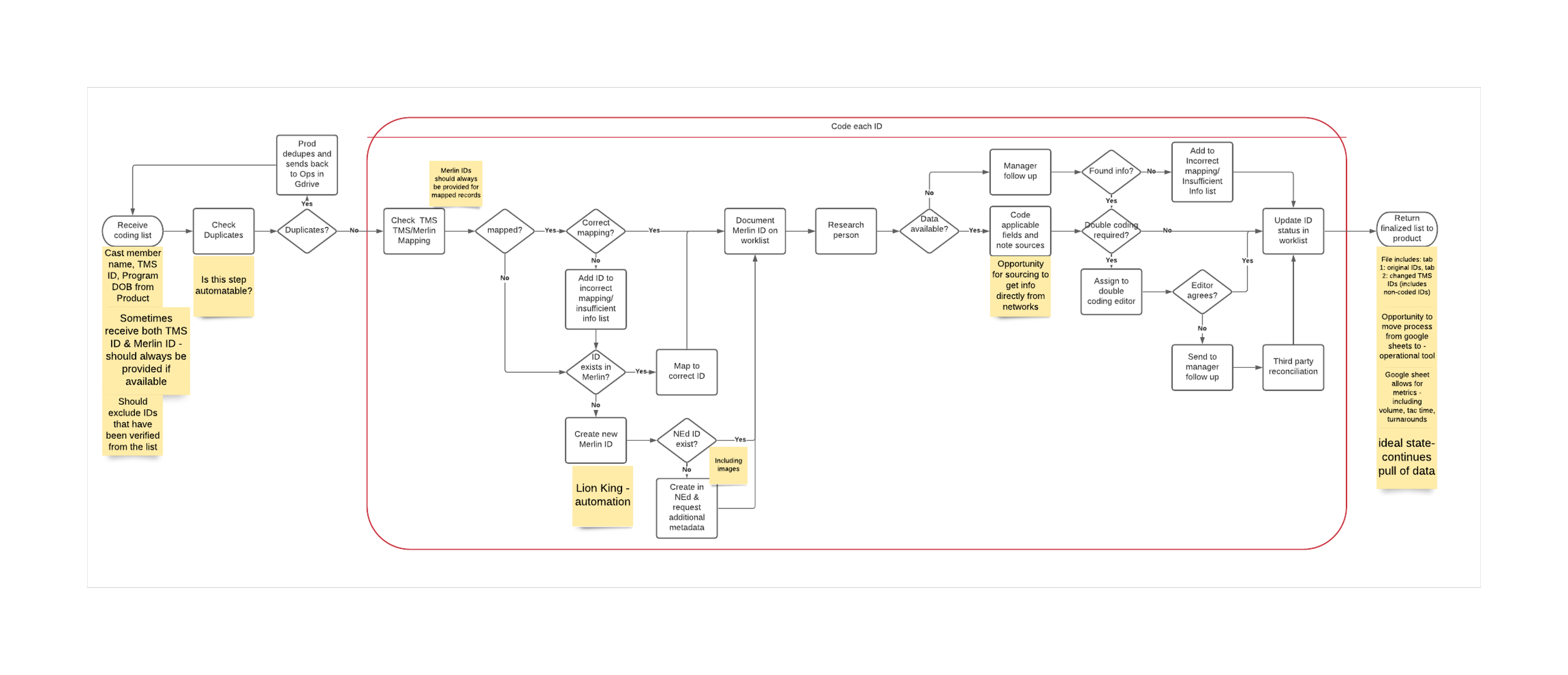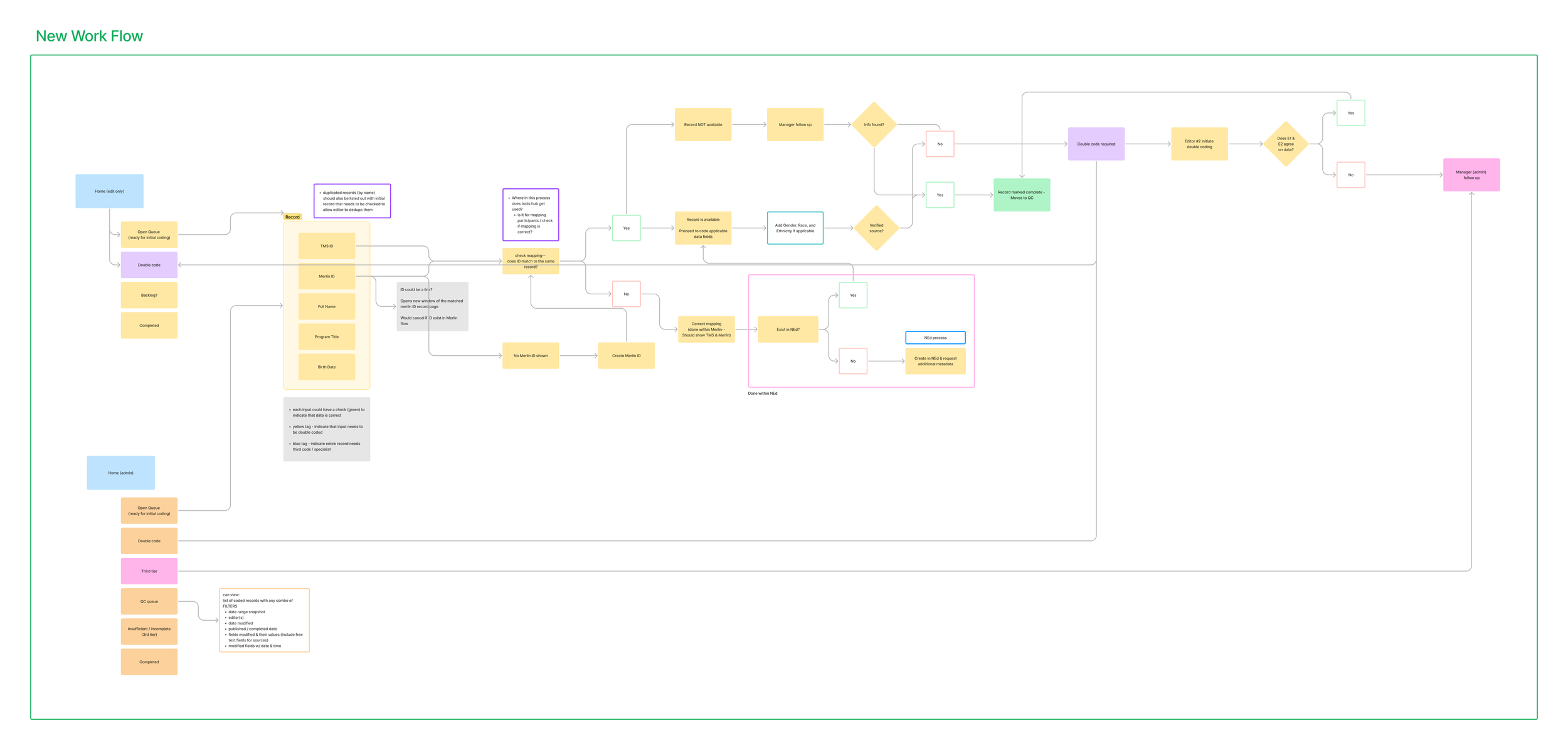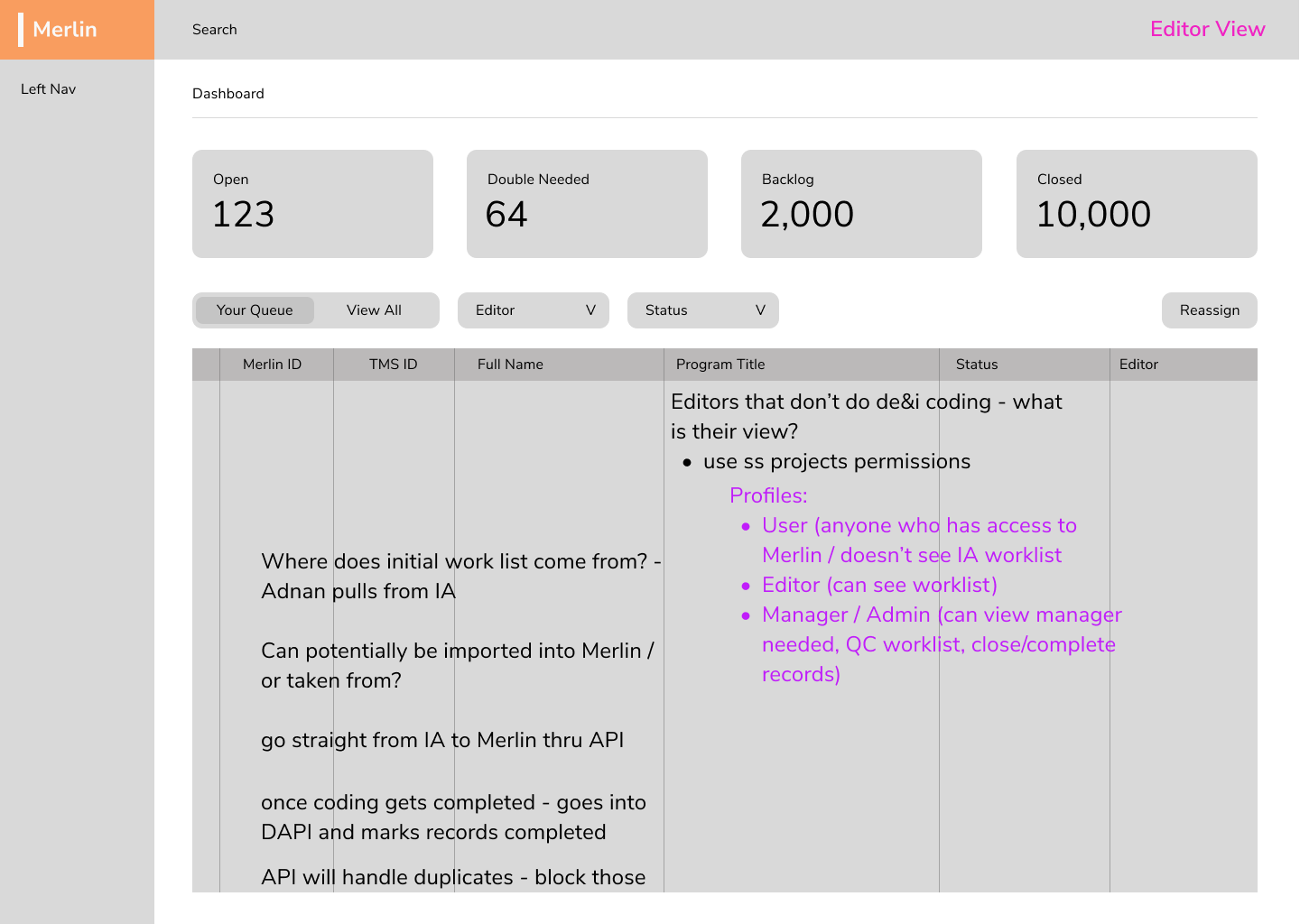Building a custom dashboard.
TL;DR
I replaced a manual, spreadsheet based process with
a custom dashboard that improved workflow efficiency by 30%.
Role
Product Designer, User Researcher
Team
Content Editors (2), Engineers (2), Product Managers (2), QC Specialist (1)
When
2023-2024
One Year
Intro
Studio System aimed to expand inclusive and diverse representation in the entertainment industry. As Gracenote started collecting diverse celebrity data, the editorial team quickly realized the current CMS didn't have a built-in workflow. They quickly made a process using spreadsheets but it wasn't going to be sustainable in the long run. With celebrity data changes consistently coming in, editors needed an interface to track records, see what changes were made, and in some cases, have senior editors step in for a two-step verification process to ensure accuracy and proper database matching.
Task
Build an extended interface within the current CMS tool so that it empowers the editors to scale operations in support of Nielsen's focus to expand on inclusive and diverse representation in entertainment data.
Process
Using another tool as a critical step of your process is never ideal. It was really frustrating for the editors to constantly context switch between different tools and programs. It became known to me that they needed their process built into the current CMS tool they were using.
As the sole designer, I created an end-to-end interactive dashboard experience to compliment the existing CMS tool. I collaborated closely with senior editors, product managers, and developers to drive design decisions focused on maximizing efficiency for the editors workflow.
I led a variety of workshops with the editors to get a better understanding of what they needed. I also shadowed their workflow, and together, we discussed must-haves and potential issues that can occur. Continuous discussions were had with engineers to consider database security and data migration to the new tool.
As we continued to collaborate together, we created a new work flow and I began the wireframing process of the pre-existing interface in order to maintain consistency and ensure a familiar experience for the editors. Then, I created a polished interface and prototype so that the editors were able to get an accurate depiction of how their new workflow can look and function. Together, we tested the prototype and made iterations to accommodate for any one-off use cases that the editors may encounter.
Learnings
v1.0 of the tool was fully built out and the editors began trialing their new workflow in user acceptance testing (UAT). Within two weeks of testing, the editors had noticeably improved their workflow efficiently by 30%. They were beyond ecstatic to get out of excel sheets and fully utilize this new interactive dashboard into their process.
It was really amazing to witness the different teams collaborate together and bring this tool to life so that we could expand the celebrity metadata by focusing on diversity, equity, and inclusion. By introducing this new tool, editors can now work more efficiently, process more talent data, and ultimately enhance industry representation.
Due to a NDA, details of the project may not be shown.
For more details, let's connect.





